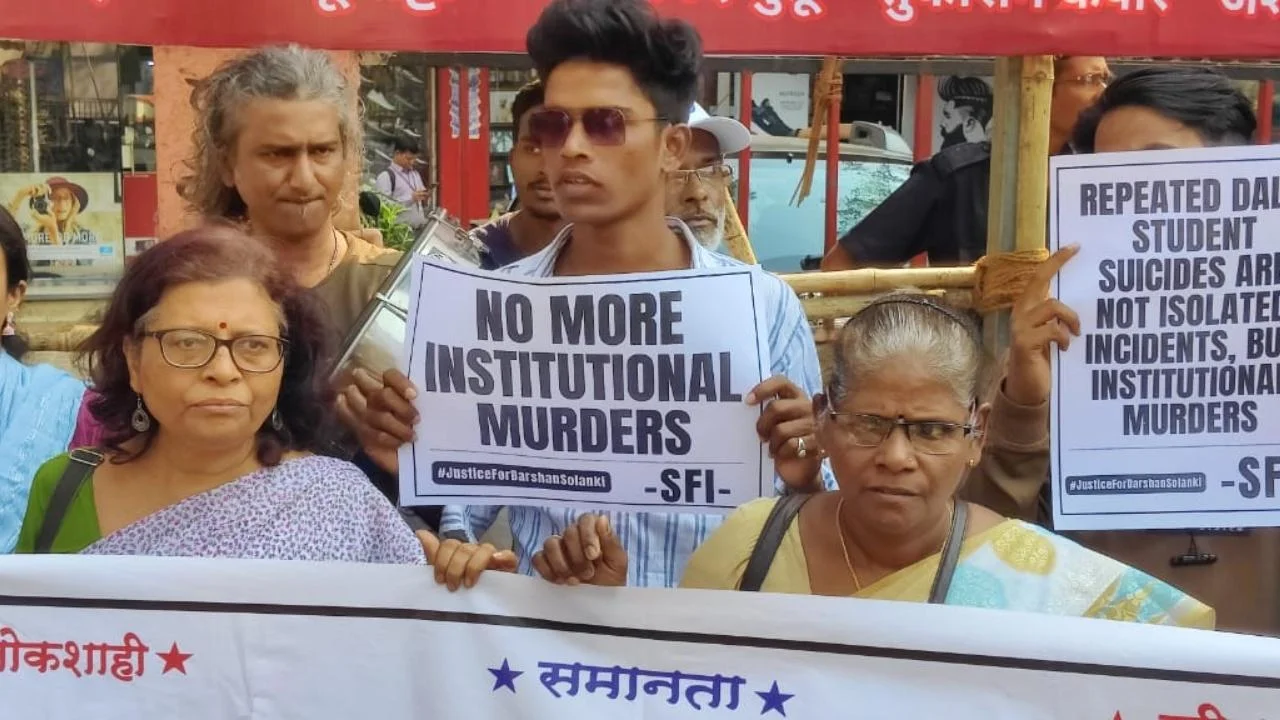In the USA, the advent and rise in popularity of the modern IQ test in the 20th century went hand in hand with research that compared performances of various socio-racial groups on these tests and found that differences exist, with people of colour, particularly Black and Latinx groups, underperforming when compared to their White counterparts. Most infamous is psychologist Arthur Jensen’s 1969 article published in the Harvard Education Review as well as ‘The Bell Curve’, a book written in 1994, both of which attribute racial disparities in IQ test performance to genetic differences among races and not the social disadvantage owing to race that they had to face.
Such views are echoed even in recent studies and in many conservative circles. Their conclusions have historically been used to make the case for curtailing immigration and ending social programs that improve the lives of socially and economically disadvantaged people and as basis to justify and perpetuate exclusion and inequality. These implications are controversial, with many experts rightly calling into question the methodologies of the studies, as well as the political motivations of the authors.
However, given the persistence of the racial and economical differences found in IQ tests, in scholastic standardised tests such as the SAT and ACT, as well as in the intellectual performances of social groups even in India, there is some value in examining the reasons for this trend. These suggest that racial disparities in IQ test performances are not attributable to genes as much as the environments of people facing social disadvantage, the methods commonly used to measure intellectual ability, and perhaps most importantly, in the systems and pedagogies of our educational institutions.
Also read: Remembering Rohith Vemula And Casteism In Indian Universities
Racial disparities in IQ test performances were not attributable to genes as much as the environments of people facing social disadvantage, the methods commonly used to measure intellectual ability, and perhaps most importantly, in the systems and pedagogies of our educational institutions.
How Social Disadvantage Translates Into Intellectual Underperformance
The full impact that historical exclusion and oppression has on a community is difficult to gauge, given that many effects are latent or intangible in nature. Besides limiting one’s access to economic and social resources, studies indicate that social disadvantage percolates into other areas of an individual’s life, particularly their sense of self, wellbeing and ultimately, intellectual performance. Some of the landmark studies analysing this, are described below.
1. Stereotype Threat
Wishing to understand the racial differences seen in standardised test scores, psychologists Aronson and Steele conducted experiments in which they measured the performance of Black and White undergraduate students on the GRE in differing conditions.
Results of the experiments showed that in testing scenarios where students were told that the test was a measure of abilities, a set of Black students underperformed when compared to White peers in the same testing scenario, and when compared to other Black students who had been told that the purpose of the test was not to measure abilities, but to help the researchers understand psychological processes. Black students were also found to underperform in testing scenarios where researchers asked them to indicate their racial identity before taking the test.
The researchers concluded that in testing conditions where the test was framed as being a measure of abilities and when participants’ racial identity was made salient prior to beginning the test, a unique anxiety was evoked among Black students: that of confirming their position of social disadvantage and the prevalent stereotype that Black students were less capable than their White peers. The threat of confirming a negative group stereotype hurt their performance in the test and thus, paradoxically and inadvertently, they would confirm the stereotype.

This phenomenon was termed as stereotype threat.
The experiment was replicated for other social groups for whom stereotypes are common. For example, in one experiment, Asian-American women were found to perform better on math tests in conditions where their race identity was asked, but worse in conditions where their gender identity was asked.
In India, where people belonging to certain castes have for thousands of years had to live with restrictions on occupational and educational opportunities, stereotyping of abilities, and ostracisation, the effects of stereotype threat are likely to be potent. The few studies that have investigated the effect in India suggest the same. Economists Hoff and Pandey (2006, 2014) conducted an experiment where children from Northern India were asked to solve mazes. When the children’s castes were not revealed, performance by low-caste children was not very different from that of higher castes. Yet, when castes were publicly announced, performance by lower caste students dropped significantly, while this effect did not show for students of upper castes.
2. The Pygmalion Effect
The Pygmalion effect was first observed in an experiment done in the 1960s, where teachers in USA were informed that certain students in their classes had been categorised as ‘gifted’ based on their superior performance on IQ tests. The students themselves were not informed of their falling into a special category. One year later, the students who had been labelled as gifted were found to have drastically improved in their grades as well as IQ scores.
In fact, these ‘gifted’ students had been given the label by researchers at random, and the improvement in the students’ grades and IQ scores demonstrated the overbearing role that teachers’ expectations can play on student performance.
The biases of a society inevitably seep into its every facet, and it is likely that educationists and teachers carry biases too. However, in addition to one’s position of social disadvantage, given the deep influence of teachers in the lives of students, their biases can also have a malignant impact on the academic trajectories of students, particularly those belonging to social groups that are perceived negatively in wider society.
3. The Psychological Burden of Social Disadvantage
Recent behavioural experiments have also shown that individuals who have long suffered from discrimination and as a result faced with social disadvantage, may also suffer from lower levels of self-esteem, lower self-efficacy, more negative self-concept, and lower sense of belongingness at university.
For anybody who keeps themselves abreast with the news in India, such research findings will not come as a surprise. Reports of Dalit students’ death by suicides at institutes of higher education in India are tragically common. The death of Dr Payal Tadvi in 2019, the attempt at death by suicide of M. Mariraj in 2018, and the death of Rohith Vemula in 2016 – all underline the social disadvantage, structural oppression and indignities Dalit students suffer through till date.
The implication of this evidence is troubling: the translation of social disadvantage into psychological disadvantage seems to hamper the ability of marginalised sections of people to grow out of their positions of underprivilege, perpetuating a vicious cycle.
Also read: Doctor Payal’s Fight Against Institutional Caste Discrimination
Measures That May Change Things For The Better
The research cited above shows that true inclusion of disadvantaged communities in education can only be achieved with systemic level changes. Some possible measures that may be taken include the following:
1. The Expansion of Culturally and Socially Sensitive Mental Health Services
In 2016, the University Grants Commission directed all universities to set up counselling services for students. Many school boards have also mandated the presence of psychological counsellors in schools. However, the dearth of competent counsellors remains a serious concern. These concerns are compounded for students of marginalised sections of society who might not be able to access therapy, and who may encounter practitioners who are ignorant or insensitive towards their social circumstances.
2. Promoting Inclusive Educational Spaces
An important source of evidence for continuing caste-discrimination in colleges in India is provided by the Thorat Committee Report of 2007. Set up by former Prime Minister Manmohan Singh to investigate allegations of differential treatment against students admitted through affirmative action in the All India Institutes of Medical Sciences (AIIMS), New Delhi, the report found that 69 percent of SC/ST students were not getting adequate support from their teacher, 76 percent claimed they were asked about their caste either directly or indirectly and 84 percent believed that their grades were affected by their caste background.
To change the culture at our educational institutes, we may take cues from universities abroad that also grapple with social issues such as racism. For instance, in response to the 2015 anti-racism protests, the Massachusetts Institute of Technology sought recommendations from the Black Student’s Union. These recommendations included increasing the availability of counselling services on campus, ensuring that mental health staff has expertise in race-based traumatic stress, emphasising the value of diversity in orientation programs, and regularly assessing the experiences of minority students. Another example is University of California’s recent decision to eliminate SAT and ACT requirements for admissions in recognition of the fact that standardised test scores favour wealthier, white students.
Similar initiatives and policy changes may be adopted in Indian institutes too. But to achieve meaningful change, we must first acknowledge that a problem exists. Additional research is needed in the area and education policies, particularly those aimed at inclusive education for all, should be based on evidence, and more importantly, must take into account the voices of the people whose lives they impact the most.
For more information on the racist history of IQ testing and the problems with popular myths on intelligence, please have a look at the video essays linked here:
For a better understanding of the intersection between mental health and social disadvantage, please follow the work of activist Divya Kandukuri
Saumya is pursuing her Master’s degree in Lifespan Counselling Psychology from St Xavier’s College, Mumbai. Within the field of psychology, her deepest interest lies in understanding how social contexts impact health and well-being. She can be found on Facebook.




